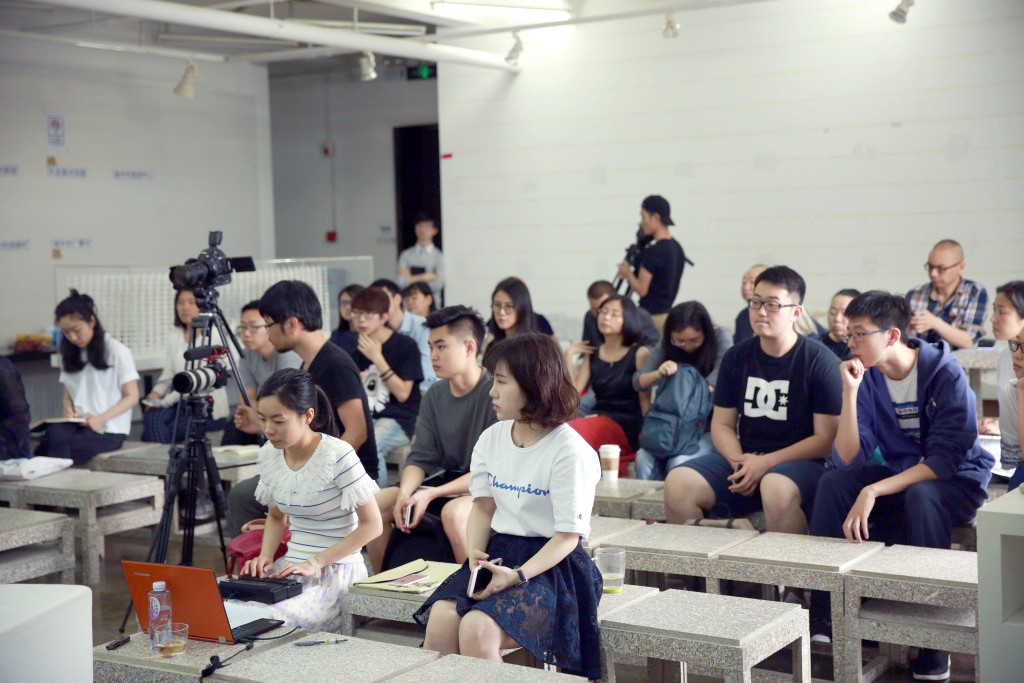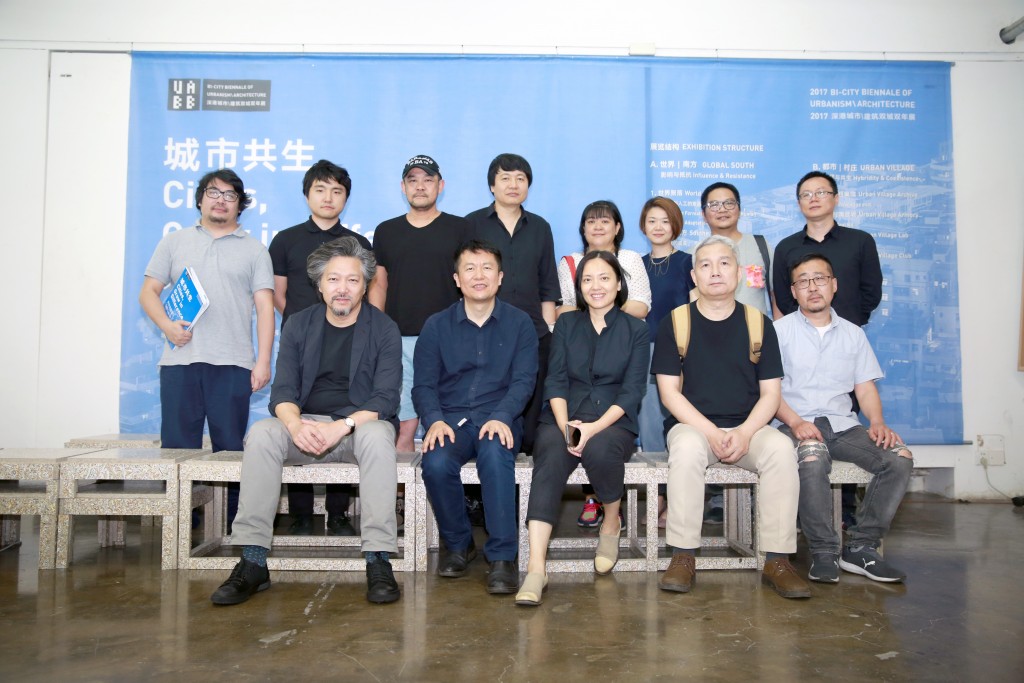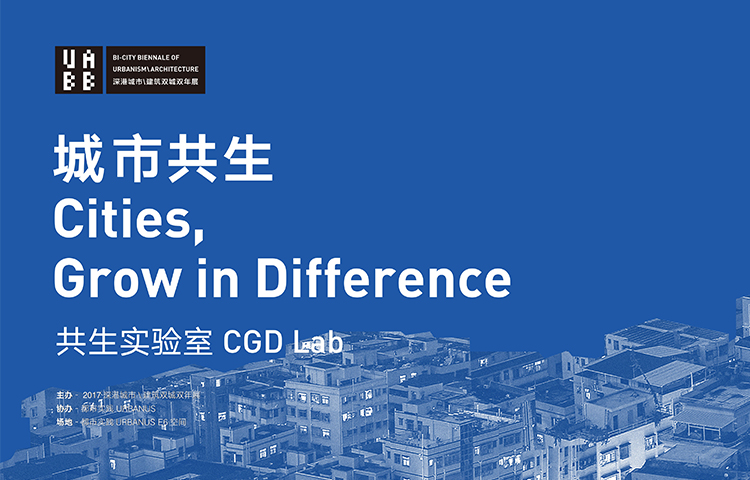
UABB (Shenzhen) 2017, under the theme of “Cities: Grow in Difference”, is a platform that calls for new theories, new experiments and new practice models. It’s a biennale that keeps growing, emphasizing “discovery” instead of being limited to a pre-set space of communication.
HOU Hanru, one of the curators of UABB 2017, curated the Delta Lab event for the second Guangzhou Triennial (2005), which invited artists, architects and scholars for study and open discussion of the rapid urbanization in China, especially in the Pearl River Delta Region. The other two UABB 2017 curators, LIU Xiaodu and MENG Yan, were also part of that event. So naming the UABB 2017 curation events as lab is both a tribute to this shared past of the curatorial team, and a demonstration of the complexity and uncertainty brought by the venues of 2017 biennales.
The Symbiosis Lab is a workshop, instead of a forum. As part of the opening process of the UABB 2017, the Lab explores the in-depth meaning of the theme, the inherent logics of the content and the visual display of the exhibitions. It invites experienced curators and experts at home to explore questions such as: how to tailor made a biennale in “urban villages”; how to focus on the local context of exhibition contents, so as to explore and reflect on urban villages from the perspective of daily life; how to display an exhibition for the public that both allow imagination and face reality; how to encourage as more public attention and participation as possible into the exhibitions and topics, by means of presentation, visitors guide, public education and villagers participation?
The Symbiosis Lab was first opened on May 19, 2017 at Urbannus’ E6 Space in OCT LOFT. The morning session is a closed meeting mainly on topics relalted to urban village activites, while the afternoon session opened doors to the public and discussed topic related to the theme “Cities: Grow in Difference”.
–
A Memoir of the First Symbiosis Lab for UABB 2017
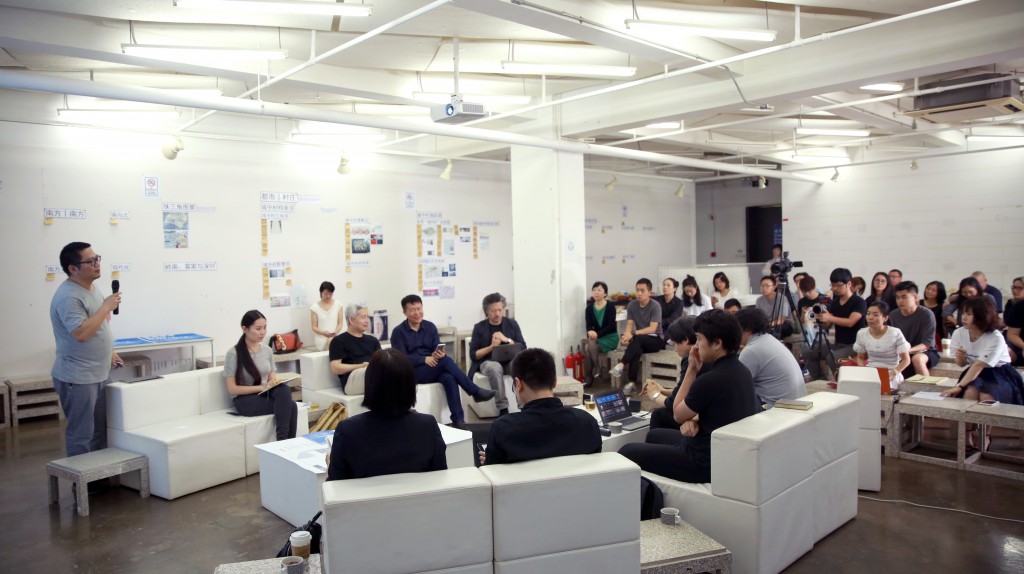
Topic 1: From World Settlements to Collective Rule-breaking
ZHANG Hanping — Recently I’ve been doing research on traditional settlements jointly with Wang Yun, who is the co-curator of the sub-section World Settlements. We are doing this from two perspectives: One is from the perspective of history, to display picture chronicle of world-wide traditional settlements, including human settlements in the macro sense; the other one is to showcase the diversity of world-wide settlements, be it villages, cities, or urban-villages. We aim to detach ourselves from the conditions of urban villages and to investigate the phenomenon and status quo of it in a distant and macro way. By means of detachment and distant observation, we hope to discover more possibilities and provide more background information for the exhibition. This is our preliminary idea.
SHI Jian — Settlements are more closely related to villages and the study shall be relatively static. There’s a book published years before, called Arrival City, which sees urban villages in terms of sociology of space, redefining regions such as urban villages and declining urban areas. What’s this kind of urban area for? In the process of rapid urbanization, it’s where newcomers learn how to live and work in cities before they become part of the city they settle in. Settlement is only a basic element, and new integration between settlement and urban village is still needed. In the process of general urbanization, every city has their specific problems. Urban village is a problem for Shenzhen, but not for Beijing and Shanghai. Beijing has problems with siheyuan (Chinese quadrangles) while Shanghai should deal with lilong (Shanghai lane houses). They are all new spaces in cities, with different manifestations in different cities.
ZHANG Yuxing — Urban Village is a new style of spatiography that arises in the new production and consumption links in the process of globalization. Urban villages are not concrete villages, it should be called, I think, an “extreme”: It does not point to anywhere, it is just an abstract point, and it just happens to be in Shenzhen or it can happen anywhere in Africa. This “point” can link all flows of the world like production flow, information flow. These flows converge at one point, and spread to its surroundings like a cancer cell. That’s how an urban village comes into being. The study of urban villages should be done with the study of flow information of all products, and investigate how these flows converge at urban villages, because this is the way that urban village becomes a new concept in cities.
The various flows of the urban villages is derived from its density. It’s not the density of population, but of abstract flows. It’s where flows, information and products settle. Once the settlement is formed, it attracts energies, and has corresponding population and behavior. Therefore, urban villages are not all the same with traditional settlements in that traditional settlements form in the same way as cities do, that is, they form under a standard system and without any transcending forces; while urban villages are formed in a globalized mechanism, it’s a special spot on the basis of the new and abstract economy in globalization hence is transcending.
The subtitle of our section Global ·South is Influence vs. Resistance. Why can urban villages succeed in resistance? There are important institution reasons in it: a collective system and collective administration plus an inclusive environment of Shenzhen, give rise to collective rule-breaking. It’s not about breaking laws or regulations, but about rebellion against the whole system in the name of the collective. And the rebellious experience of urban villages can be promoted to the often-discussed resistance against the modern capitalist system. All collective spaces, like Shanghai workers and farmers new villages, have their own values. It’s a force of the middle way that has never been investigated. Individual privatization cannot compete with privatized system, nor can they compete with the complete socialized system. Urban villages, by taking the middle way, set a good model of resistance.
MENG Yan — Urban villages are special zones in cities. Many of our interventions in the urban villages are otherwise impossible out of these special zones. I hope that our Symbiosis Lab would eventually have something like declaration. Such collective rule-breaking is, in fact, a process of creating new rules. It seems there isn’t any rule in urban villages, while there are in fact unwritten rules which we would like to manifest, with an aim to do some experimentation in these urban areas. We do exhibitions in urban villages, not merely for nostalgia, nor for the preservation of urban villages, but also for the discussion of topics of the future. If we can reserve some experimental areas like such special zones in the city, we can see hope in the future.
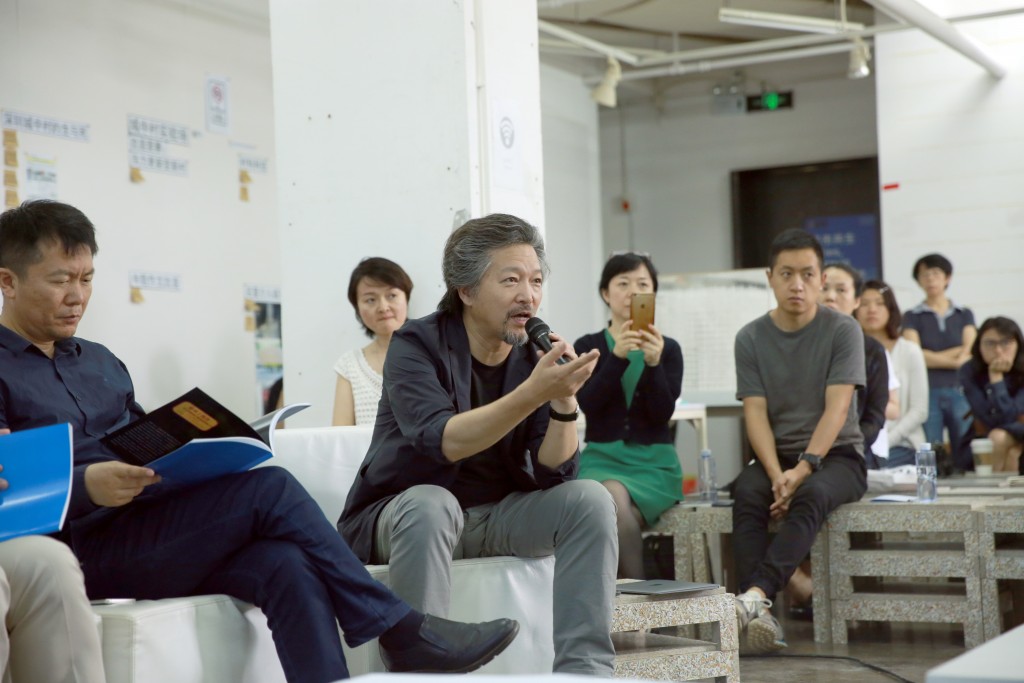
LIU Xiaodu — From arrival city to collective rule-breaking, it is about the study of morphology, and the study of sociology of space. From the perspective of initiation mechanism, urban villages have something in common with those in the rest of the world, and something specific to China. There’s much to be tapped. For example, Siheyuan (China Quadruples) was originally an official space, but later revolved to a miscellaneous courtyard house. Workers and farmers new villages was first allocated to dwellers, but later developed into a mixed compound because of privatization. It is the same case with urban villages, which started with two-to three storied courtyard buildings dwelled by families of three, but later developed to what it is today because of the explosive growth of population. They all transfer
to have a mixed function, and are strongly related to the occurring mechanism of these spaces. Any event in history can influence and change social spaces, and the general characteristics shared by
such change is worth discussing.
–
Topic 2: “Modernity of Difference” in South
Liu Heng — About this topic, there is actually a systematic framework. In the 2015 Bi-City Biennale of Urbanism\Architecture (UABB), the topic of our forum was Rethinking the South, which has two meanings: on the one hand, we are living in the South, and our architectural practices are based in this region. The apparent characteristic that makes it different from the North is the every possibility brought by the climate; on the other hand, “rethinking” means that after so many years of redistribution of global resources, talking about regional issues over again has become a political issue, as well as an economic issue. Our regional practices seem to be a kind of subconsciousness in a sense. That is to say, the south will always be our subconscious home, or a kind of manifestation of vitality, and then it will be presented through our architecture practices. So when we talk about rethinking the south, I think it should be a very practical action which needs to be combined with spatial practices. This kind of spatial practices not only reflects the vigorousness and the calmness of the south, but also embodies the practicality, and it is integrated into the lifestyle of people in the south. So, how to show the interactions among the subconsciousness, the imagination, the spatial practices, the lifestyle and the places in this exhibition might be an issue which is the closest to the features of the south.
Zhang Yuxing — I have just mentioned that in collective rule-breaking, there is an important prerequisite: Shenzhen’s inclusiveness, which is associated with Hakka in Lingnan (south of the Five Ridges) region. Why Shenzhen is inclusive? Because we are relatively far from the center of power. This is related with “urban village” issues, and that’s the correct logical relationship. I think the “south” we are talking about now is just the relative south. The relationship is actually like that between the political edge and the center. It is not an absolute south, and as far as I am concerned, the south is perhaps a place far from the center of power and it is under comparatively loose control. Thus there appeared the prerequisite of collective violation that I mentioned before, and it also contributed to the free growth of Lingnan Hakka. The subhead of this section is very well written, i.e. Modernity of Difference, which highlights the topic that we talked about just now.
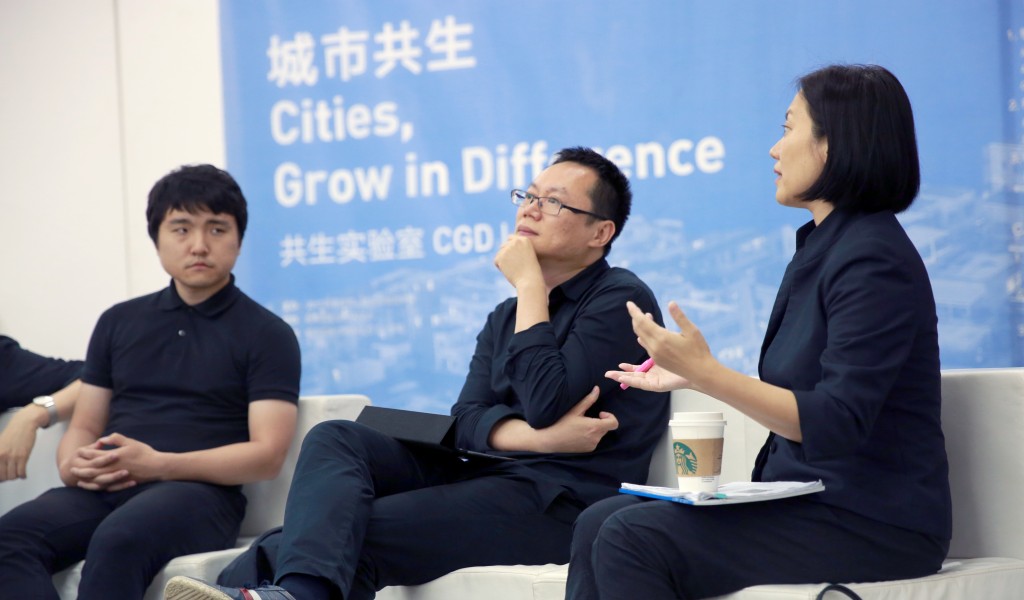
Liu Heng — It seems that most sparks of fire were initiated in the south, but finally set the prairie ablaze in the north. Feng Yuan’s work in last UABB Wealth Architecture is a simulation of various folk architectural styles in the south. Put the buildings into a goldfish bowl in which there are a lot of water and goldfishes, then wait to see how many days the goldfishes can live. While combining the concept of geomantic omen in the south, I think this mashup style can well reflect the features of the south. Things in the south are of profound connotation, but they are full of energy, inspiring and wet. When observing the artists creating architectures, as a architect, I feel a bit superior. Of course we also need to consider the modernity issue, that is the clearly defined regional creations in the south. So this is called collision, which has apparent southern style. Since there are so many different forms to be south, should we just let them collide randomly or link them up with a clue?
Zhang Yuxing — It has something to do with the following issue: mixture and symbiosis. The reason why the south exists is that it allows the north to hybridize with it. And the reason why the north exists is that it doesn’t allow the south to hybridize with it. The south is willing to accept other parts of China to mix with it to form an “isomer”, because various kinds of strange creatures will appear only after the mixture. The north emphasizes that it can’t accept that, so it can only become the north. I think this illustrates that it is actually a kind of relationship, a relationship between I myself and another kind of creature.
Shi Jian — The south that we are talking about nowadays mainly refers to the east of the Pearl River Delta, namely, Shenzhen and Dongguan which are located at the east of the Pearl River Delta (PRD). But when we look at the western part of China, we will see even greater differences between the south and the north, for example, Zhuhai. The population scale in the east of PRD is basically eight times larger than that in the west of PRD, and the same to the discrepancy of the GDP between the two areas. But at the beginning of the reform and opening up, the scale development of the two areas were almost the same.
Liu Heng — The issue that Mr. Shi just talked about is also linked with a kind of subconscious south and north. The south rather represents a backward and unsound direction while the north is more advanced. So whether it is Shenzhen or Dongguan, they are all world factories. In a sense, Shenzhen is a northern city, so there is an other interface inside it. When it was integrated into the north, its development was also promoted by the mighty of the north. The situation of Zhuhai is quite the contrary. Its other elements are weaker but the situation will be broke very soon because the overall economic landscape will be changed when the Hong Kong–Zhuhai–Macau Bridge is completed in 2017. When we dynamically look at all directions of PRD, we will find the same problems. By putting the south as a counter strategy and a breakthrough point, paying attention to ensuring ourselves to involve into this kind of dynamic issue and finding our goals, perhaps we will make this thing more meaningful.
Feng Lu — The translation of the theme is also very interesting. The Chinese version is “共生”(symbiosis), but it is translated into “Difference”. When there is no difference, there is no symbiosis. So as far as I am concerned, when we are talking about symbiosis, we are actually talking about difference and this is a very important point. Why we say that we are living in a contemporary era with diversity? And how to understand the word “diversification” exactly? Or how does it work? There are two types of differentiation of urban space. One is the fake differentiation, just like products providing us with diverse options which are actually fake ones. Finally you will find that it seems like there are over 100 brands you can choose from, but in fact, all the things are monopolized by five large enterprises. This is the fake differentiation, as well as a result caused by globalization. It creates a fake prosperity of consumption, which makes you feel free, but actually you are just at the different consumption chains. Another type of differentiation is more authentic, that is to say, a kind of real and different diversity. So if we want to discuss this kind of the difference, we may discuss about the south in a more detailed manner. We have always talked about “the south” and “the north” before and have gotten used to this grand statement, which will make us easily sink into a trap of macroscopical narrating. But for the word “south”, can we make it less flattering or define it more detailed? So when we are discussing about the south, we need to be aware that it is not a simple geographical division, and we should connect it to the reality, then we will find that “the south” will surely become a cultural identity. If we say, the south is an urban planning mode used to fight against globalization and the mechanical standard emerging together with the appearance of modernism, then how does it work exactly? If different places use this resource of the south as a kind of resistance, then where does its effectiveness reflect? In China, there are two southern areas recognized by people as cultural identities, one is Jiangnan (the regions south of the Yangtze River), and another is Lingnan. From the perspective of a large cultural system, we don’t have a concept of Jiangbei (regions north of the Yangtze River), but only the concept of Jiangnan. So the word “south” must be a noun in the single central dynasty, and beyond the range of the center, thus breeding a lot of folk cultures to fight against those northern things. I found that most architects in Shanghai more or less had Jiangnan cultural background. How does this background help them acquire differentiation or personality to fight against the standardized production and where does its effectiveness show? This might take us into a more detailed discussion.
For this year’s UABB, I think the selection of the topic “urban village” should be greatly praised. There are so many things overlapped in this topic, and it does have the problems of cities and villages. Besides, the urban village exists in the south and combines with some Lingnan’s traditional things. Shenzhen is located in the south but it is like a northern enclave. As a result of an accidental political decision, it contains a lot of tension. Urban village is a kind of space production mechanism. It doesn’t have more cultural attributes but just being as a product of modernity. In a sense, it is a kind of “heterotopia”, which is in the opposite side of utopia. In the contemporary context of urbanization, villages become a kind of utopian incarnation in some sense, and people are sick of cities. But the urban village is more like a heterotopia, which is a good thing of differentiation. The factories serving as the exhibition halls are standard ones, because factories are products of modern life as well as a reflection of modern production space, being in line with the result of scientific planning. In such a framework, how can we present the differences that we have talked about, or the real diversity? I think the consideration of designing the exhibiting space should be taken from this aspect, namely, how can we show people different things in a standardized space pattern.
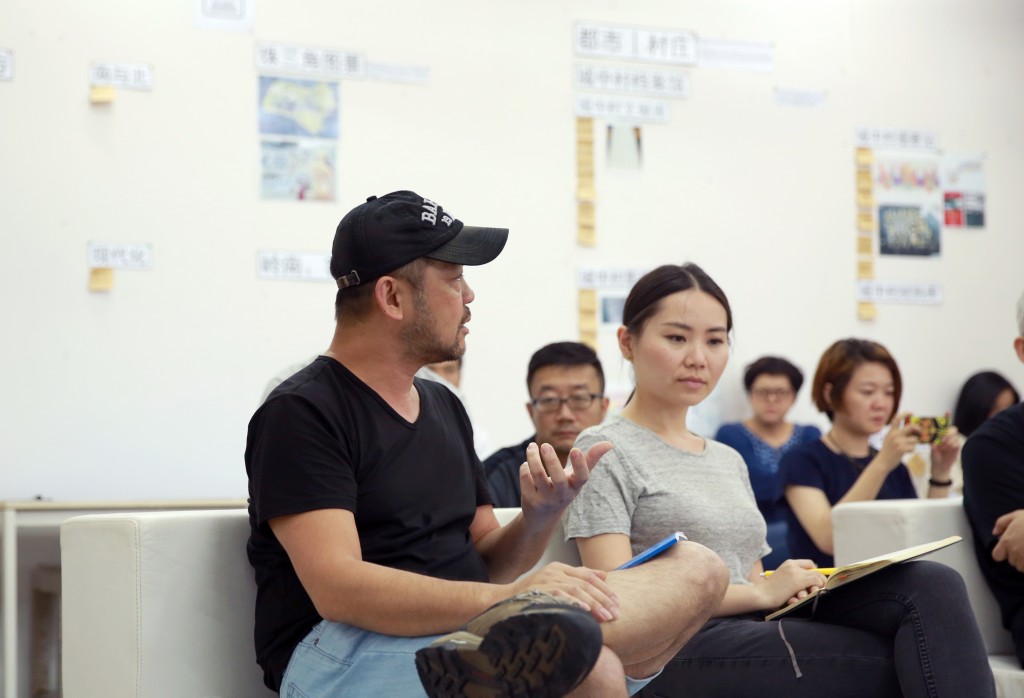
Feng Yuan — In my opinion, the concept of the south can be divided into two levels: one we call it the object level, which means it is just in this place and it is a local one; other one we call it the discourse level, which means that the discourse needs to be adopted to transform the south into a result of recognition. From this perspective, the words targeted at the south do not belong to the south. Then we can go back to Lingnan: as a geographical and geopolitical space, of course it has a long history; but as a kind of discourse, its history only lasts for about 100 years. The topic of Lingnan is initiated by a group of nonlocal intellectuals after the early republic of China. So let’s think about a wider structure, which is the development structure adopted since the 20th century. Not only Lingnan has this kind of characteristics, if we see from the object level and the discourse level, we can divide people into two types: one type is the local resident and the observed, and the other type is the observer or the kowner. The people of the latter type have changed their expanded world into an object world while the people the former type are observed and recorded, but they don’t know the truth. This does not represent that the observed and recorded world are full of uneducated people, just like the south we are talking about today., in which people living in an environment rich in culture but do not know that they are educated, neither do they know that kind of culture can be discussed. They lack the understanding of themselves. After one hundred years’ development, China has become a part of globalization. Like today, when we are involved in the villages to help with the rural construction, we undertake the functions of the colonists in the early west in a sense: we bring about advanced technologies and we take the villagers’ records and the results of researches to the exhibition and thus obtaining the results in the world that we know. But the relationship between the two sides still exists. We even need to deal with more issues in UABB because I think it is a structural problem. In a world that we know, we must keep alert, judge and observe the relationship formed between the results and the objects. When we consider about our discussions about the south the urban village and anticipate the researches in this year’s UABB from this perspective, this kind of contraposition relationship and the results will also show up and become the topic that we will deeply explore.
The identities of the many people present here, everyone’s historical connection with Shenzhen and the relationship between Shenzhen and globalization—all these elements can contribute to the series of questions we are talking about today: What is the south? How does it constructed by various kinds of issues? If I can participate in this year’s UABB, I would like to focus on the view of the relationship: conscious and unconscious. People who have advanced technical discourse, and who are living in culture but don’t know that they are being observed, all these situations are very typical in Guangdong or in Shenzhen. At last, I’d like to borrow the words said by Mr. Liu Zhiwei, our historian in Sun Yat-sen University: “We must aware that between the Chinese Empire and Nanyang Islands in the south, there is another empire, called Minyue (Fujian and Guangdong). Actually this empire was divided into two parts: one is Fujian Province and Guangdong Province partitioned within China’s mainland, and then they split and bred an overseas Minyue.” I asked Mr. Liu why they didn’t have an empire. He said that the place has a feature: people there seemed to lack some kind of ambition or skills to build an empire, or we can say, the discourse. They engaged in a variety of businesses, but they all knew that they were absent in the process of building a integrated empire. And about the absence issue, we need to back to the question that why the Chinese Empire was formed during the exchange activities of the south and the north, and how did Guangdong Province build the relationship with the center of the north. This relationship was called “Royal folk duality”. Since the Qing Dynasty, the development of the whole PRD region has been in line with the principle of duality: on the one hand, the development was required to enter the royal ideology of the nation and to become a part of Confucian ruling system. From Chaoshan to Guangdong, people all regard themselves as the descendants of Confucius and were eager to become orthodox. On the other hand, they are involved in the mutual combats and under the mutual repression, and had abundant self characteristics. So I think the royal folk duality can be used to well explain the development of PRD since the Ming Dynasty.
As for overseas relations, why there are always people from other places talking about the south? This question provides us with a lot of imagination and possibilities and I suppose it is not a question exists from today. In my opinion, if we do have such a great opportunity for us to hold the exhibition in the localized Nantou Old Town, I would certainly be happy to discuss about this place combined with the over 300 years’ history, thus to present it more plentifully.
–
Topic 3: Intervention and Presentation Means of the Exhibition
Zhang Yuxing — First I would like to respond to the cultural reflexivity that Mr. Feng just mentioned. I think this kind of reflexivity exists everywhere. The things being observed will certainly be affected by the observation, and the process is eternal and happens everywhere. This is related to our reflection on the exhibition itself, so we may ask ourselves: is it right or wrong to place the whole biennale in the urban village? People should have a thinking process, because once the art is involved, the paradox cannot be avoided that whether we should make it elite and gentle or just keep it. If you criticize others, you will also be criticized by others, so I would rather criticize myself first.
Second, I’d like to respond to what the audiences just mentioned: thinking from the perspectives of culture and time. The whole issue about Shenzhen’s southness is actually related to time. It is not formed in Lingnan for several hundred of years’ development in a conventional sense, and perhaps many things disappeared during the production process. But the southern features in Shenzhen are more linked with time.They were accumulated in such a short time, so that they make Shenzhen’s southern features or anti-southern features become more obvious. It will be more rational if we use the method of anthropology to strip such kind of status. But are the things exhibited at last more rational? I think it depends, because various results can be achieved through emotional ways.
The topic “urban village” should not be our initially set logic regulation, but needs self growth. Once the rule is determined by us, it will get into trouble basically. So it’s better to maintain its openness, so that there will be an interface, some topics and an area which oppose the whole theme till the last time. It will be interesting if we let all the audiences with different opinions to take part in our exhibition. The exhibition is not unchangeable as it always keeps an interface. The reason why the village in the city exists is that it allows to be added and demolished and it is in a state of self growth.Meng Yan: Speaking of the presentation of exhibition, we also mentioned visitors’ response just now. Since we are going to hold an exhibition in a urban village, how can we improve such kind of dialogue mechanism? We need to consider the strong particularity of holding an exhibition here and the huge difference in the composition of the audiences. At this time, how to mobilize more people to take part in it? And on the other hand, we should not let people feel that we are exploiting the urban village. Because I have heard a lot of criticism of this biennale. At first the urban village was quite good, but now the things are all messed up. How to actively involve in the urban village, and not just take it as a topic and avoid making use of it excessively?
Zhang Yuxing — The best way is to encourage the residents in the village come to make use of the exhibition. This is different from the former years’ exhibitions. We closed the exhibition at night but this time, can we allow the residents to enter the exhibition at any time and engage in other activities so that they can make use if the exhibition? We may also have an exhibition project, which studies the symbiosis of UABB and Nantou Old Town. Then we record the whole process from the first day and present the results in everyday exhibition, including the results obtained from tracking some residents. In this process, the residents will gradually accept the exhibition, experience a running-in period, and finally join it, and even you will see how they change their lifestyle after the exhibition. It’s the best experiment and work to turn the exhibition into an factor of production and enable the residents to come to make use of the exhibition.
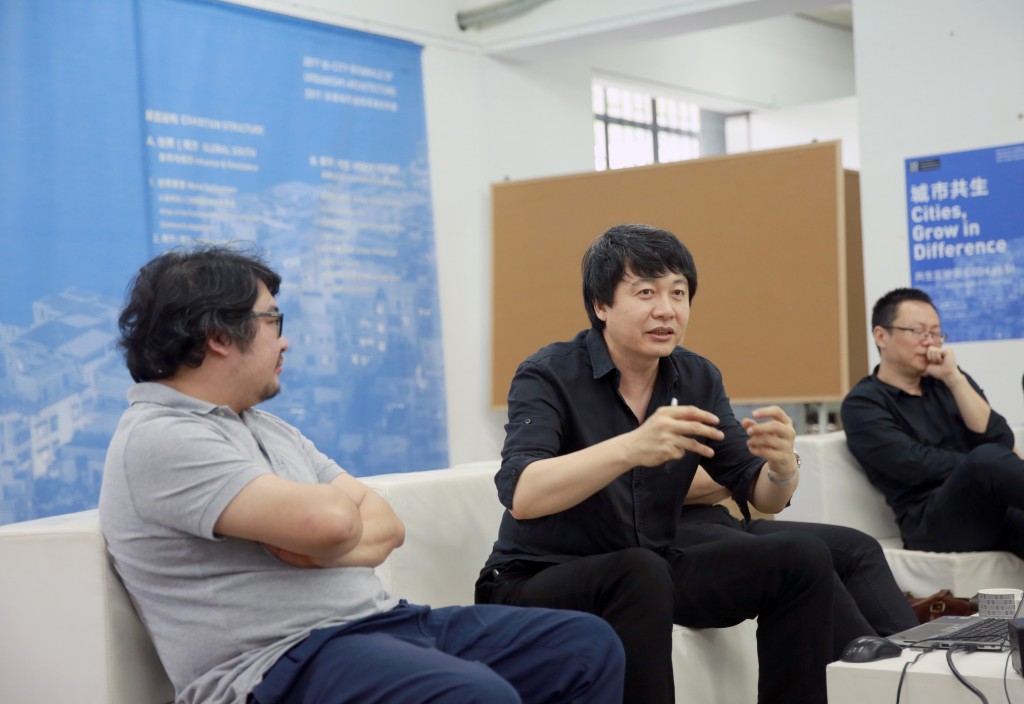
Meng Yan — An exhibition has its own academic regulations as well as unique features. People who are forced to relocate must be very angery, and for me, I will also fight against it. But if we can handle it well and make it an example to protect the urban village from being demolished and be able to survive, we will benefit a lot of people, as I think. It is an adventure, but it also can be a new experience. So we must pay much attention to every aspects, as well as the things recorded in cameras. Not only those people do not agree, but also the academic circle has objections. As an independent curator, I do things neither on behalf of the government, nor the people. I have a very steadfast value: it is absolutely wrong to demolish the urban village.
Zhang Yuxing — But what if all the people in the village are not the same people before?
Meng Yan: So you think if you don’t move them, they will not change later? That’s impossible. Dachong was demolished, and people there also have changed. We can both accelerate and slow down, but many things and directions are unchangeable. Because first we had the wish to transform, and then we have the biennale. This is an other problem. Without the biennale, reconstruction may go along in another direction, but if the two parts will both be seriously hurt, I would rather choose a comparatively better one. Architects are born to be compromised in many situations, otherwise the result might be like that of dismantling Nantou Old Town and making it another Old Town of Lijiang. But as far as I am concerned, through the experiment and exploration in UABB, we may find a new road for the spaces.
Liu Heng — I think this discussion is very interesting. For example, when it comes to Times Museum in Guangzhou, you may feel like that Rem Koolhaas had just planted a seed, but this seed will finally lead to gentrification. And another direction is maintaining the relationship between the exhibition and the original residents. We are unable to predict the final development direction, but what is the seed planted by the exhibition is the core issue that we need to discuss about. It has already shown a very strong signal to put the things in the urban village.
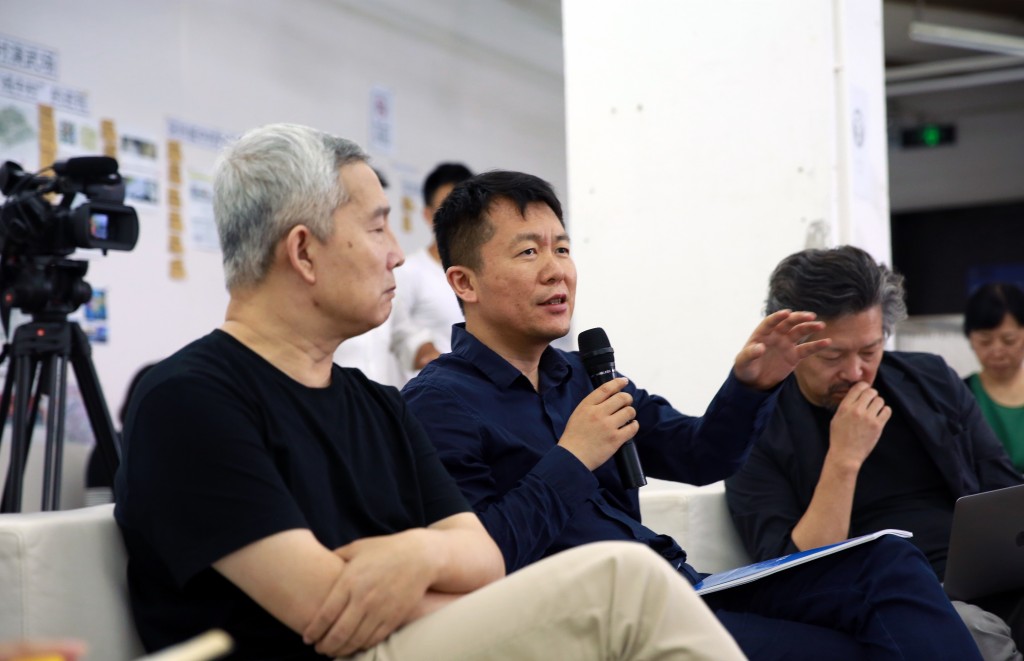
Zhang Yuxing — I agree with the value that Mr. Meng just talked about, but I also think that we should implant the reverse values. I am not saying how wonderful my values are, nor how inclusive my values are. Promoting my values while being inclusive at the same time perhaps will be a better way. For this process, I think the more reverse values that we put in, the better the results will be, because they will make the final products more valuable.
Feng Yuan — Placing the biennale in a certain life space will surely trigger some problems, or some kind of contradiction. And speaking of the structure, the village itself also reflects the relationship between inside intervention and outside intervention. What’s the core of the contradiction of this kind of relationship? We may regard the biennale as a public cultural product, or call it a non-exclusive public cultural product because it can be put in any space. But once it is held, it would not belong to the space itself but belong to Shenzhen or even beyond Shenzhen for it becomes a cultural product and is not exclusive anymore. But as the owners of the space, they must have some disagreements, because according to what those business people said, they regarded this place as an enterprise: if the products produced here belong to them, they would be happy to support this project, but if the products are shared by everyone, they might not do so. Why bother their heads about undertaking the attributes of public cultural products? So this paradox exists naturally. We can use an analogy like this: there was once an old shirt belonging to you, but suddenly the government stipulated that you could only wear the old shirt but no new shirts, neither could you wash the old shirt. You made no profits, so why would you do that? Then we can see that the problem about the biennale is quite simple: all the things you produced belong to all mankind, and what given to the original residents as a compensation at this time might be the delayed effect. Some years later, the profits of cultural introduction and protection can be seen by people.
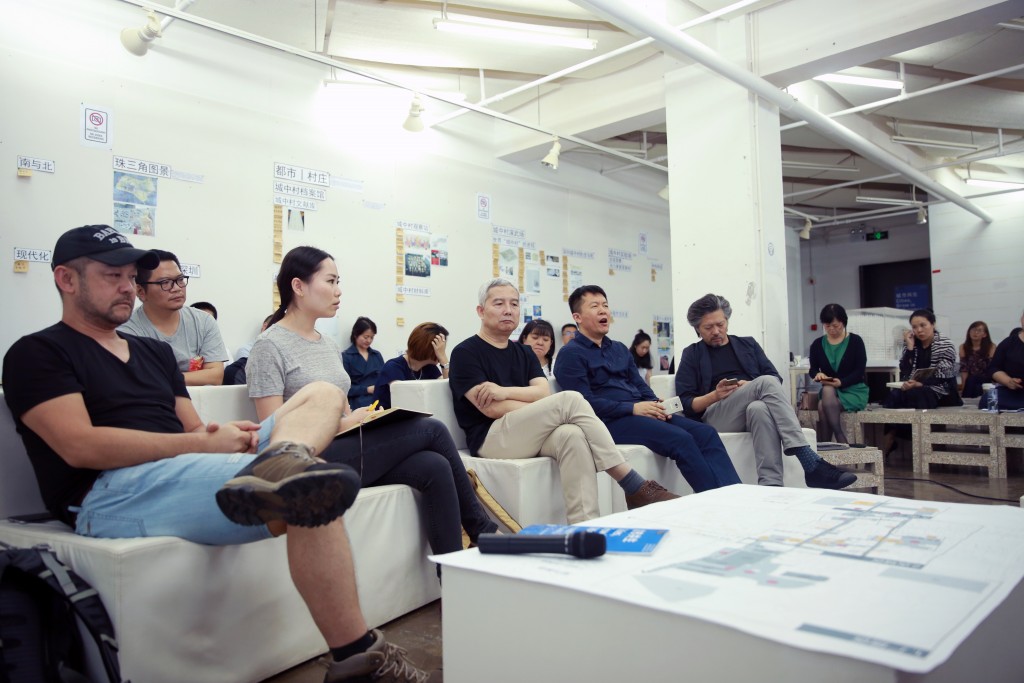
Feng Lu — Speaking of this, perhaps we need to consider the subjectivity problem, namely, whether the owner identity of the urban village exists or not. From the perspective of legitimacy, a primitive village has a primitive ownership. But the urban village that we are talking about is different from the primitive village in their values for the city. The urban village is not a primitive village anymore because it enables a great many migrants to make transitions in this place. The function is public, rather than a primordial and localized one. We can’t ignore the values of the exhibition, even if we take anthropology into consideration. In the anthropological field, there is a kind of people called the observer, who try not to contact and influence the objects. However, they still inevitably affect their objects no matter how careful they are. So it is impossible to determine whether entering the urban village is a good thing or a bad thing. When we can’t prove that, I think at least our actions are positive, and this idea is definitely tenable. At this time, perhaps action is more important than judgment.
Zhang Yuxing — Let’s beck to the original topic “Cities, Grow in Difference”. The foundation of the existence of the difference is equality, or we can say, freedom and equality. First, we must admit that all things in the world is innately equal, which is the foundation for acquiring differences. So we have to think about the relationships among powers. The exhibition has its own sense of values, which is absolutely a kind of cultural power, then how to deal with the situation that the power is connected with individuals? Or you may think: my values are correct, so I can represent all mankind. If you do think so, you are not welcomed to the exhibition. I think it’s not symbiosis, but anti-symbiosis. We should never do things of anti-symbiosis.
Meng Yan — I don’t quite agree with the view of equality, I would rather say it is balance. The society is just like a biosphere, in which some kind of balance will be reached in the development of social networks and chains. So does the universe, which also has a relative balance. But if we only see from the exhibition, we have no way to solve this problem. However, maybe we can present its problems, including various demands of symbiosis. I even think there is a section in “Future of the Urban Village” is called “Future”, but maybe it is more appropriate to call it “Symbiotic Future”, as I think. It is not a certain kind of future, which may also contain the life and death in the urban village. It has the future of life, and probably the future of death, or that of “half-dead”, etc. So I think we are able to present these problems when we see from the exhibition. At last, perhaps some questions will be asked through the exhibition, but the conclusion may not target at some certain questions.
Feng Yuan — People in the West always understand equality and freedom as a pair of products: if you want equality, you will lose freedom, and if you want freedom, then equality will be weakened. As for the theme “Cities, Grow in Difference”, whether we should discuss about the concept of “commonness” or “equality”? The “Difference” in the English version corresponds to “growing differently” in Chinese. So it is actually talking about growing freely, namely, you grow in your own way and I grow in my own way. But the concept of symbiosis is coordination with each other. So what exactly the biennale does? The purposes of the biennale are to explore, to criticize, to reflect and to prospect. All these elements together show an attitude. In a sense, the exhibition doesn’t need to be practical. When you try to show something in the biennale, you need to consider how the biennale locate these contents and turn them into a part of the exhibition itself. The urban village itself was created by the Rightists during the development of the city. The nature of the Rightists is continuously expanding their capital, so that they reversely created the discrepancy between the comparatively poor class and the upper class. In this case, the reverse was formed between a Leftist biennale and the Rightist production, thus the urban village has become an issue that must be studies and reflected. The mission of the chief curator may be constantly weaving and editing these mutually reverse things, so as to create different ways to present these issues.
Feng Lu — Do you think we are a little bit self-righteous as we talked so much about it? We all said that the biennale drove the development of the urban village, and the people in the village would benefit from that. Do we overestimate ourselves? Because there are various kinds of people in the urban village while the biennale is very simplex. On the other hand, as an exhibition and an academic one of urban construction, it also contains an art section this year. However, this event might not be that grand if we keep ourselves at a comparatively lower profile.
